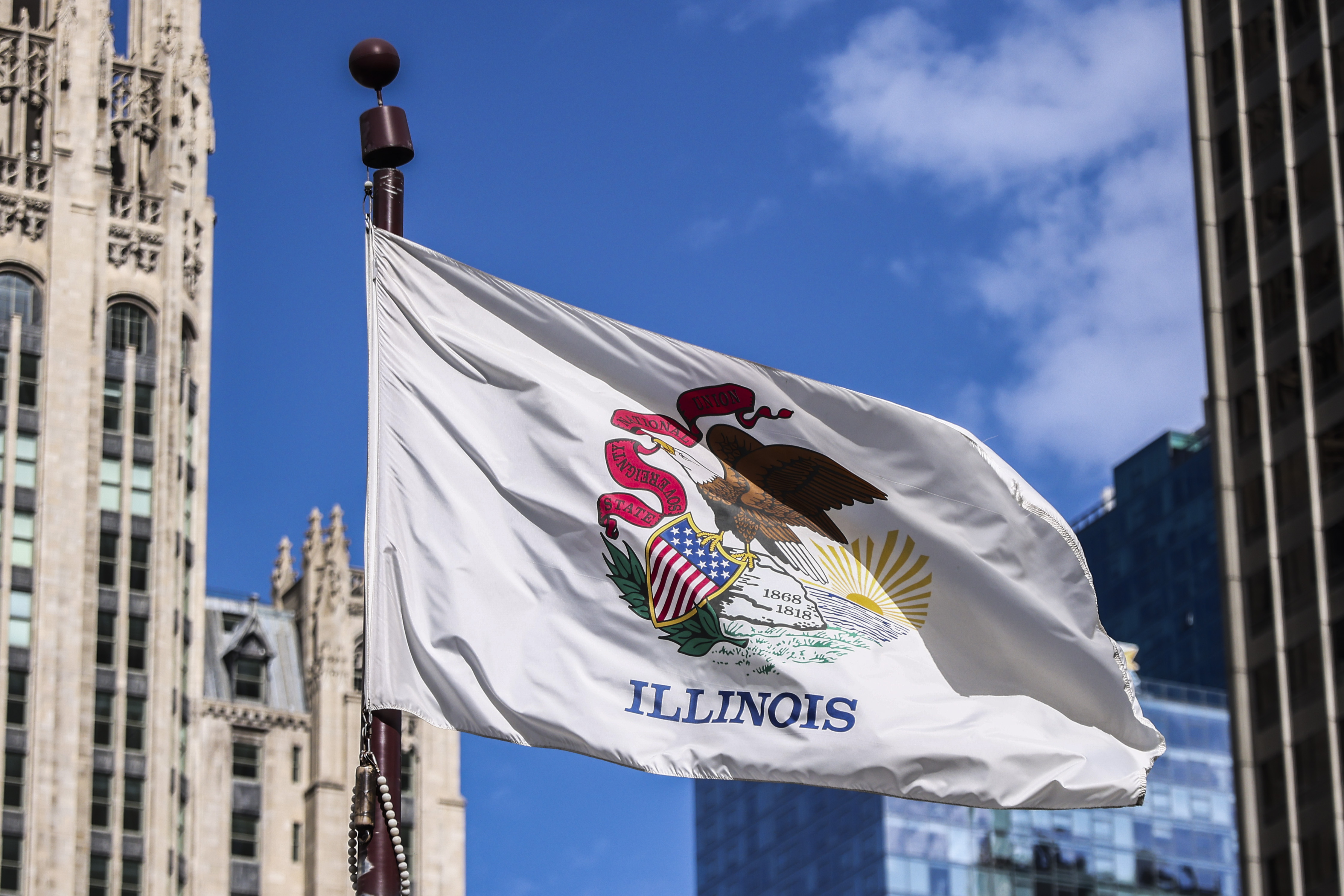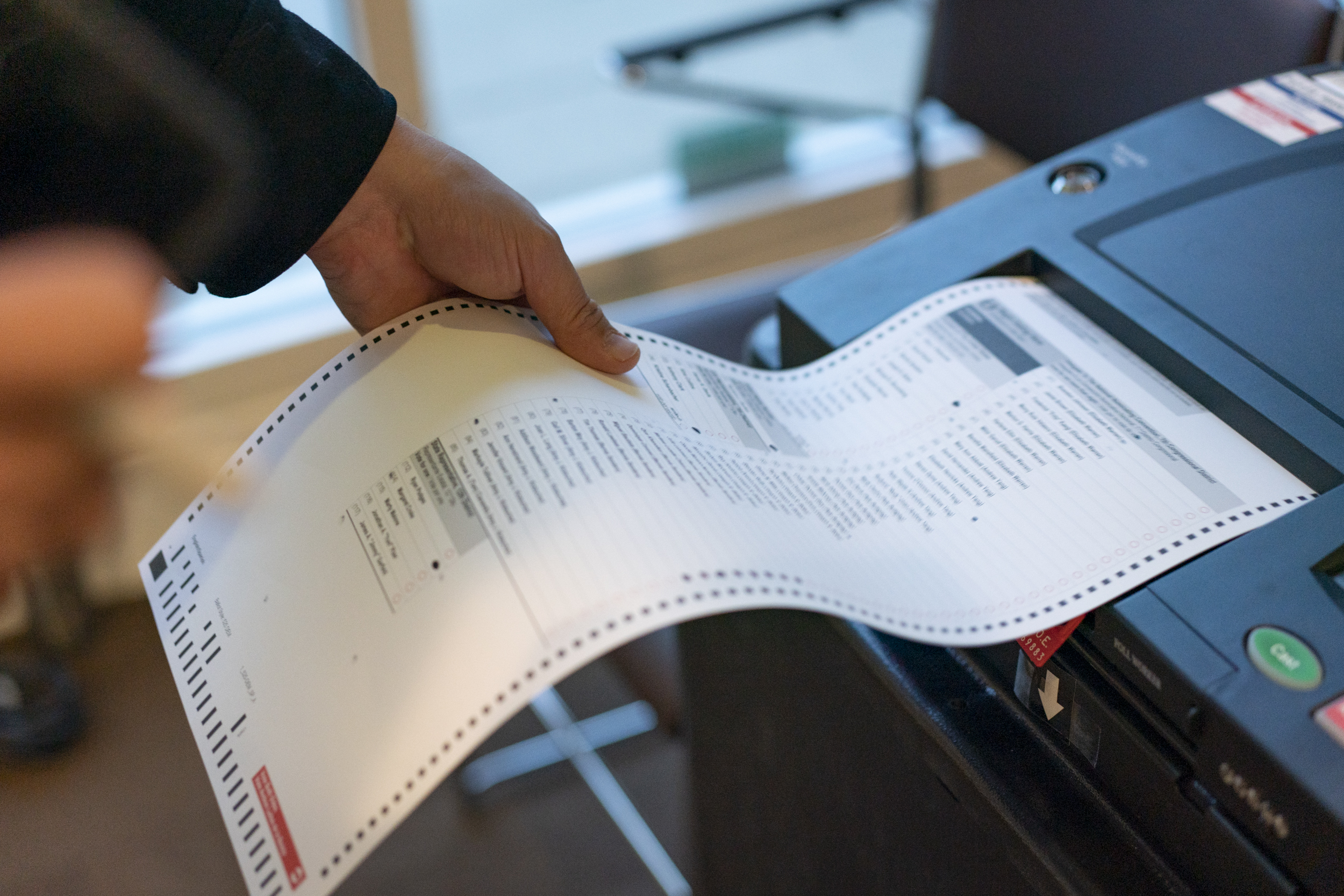On Election Day in Illinois, ballots contained statewide questions ranging from whether or not to amend the state's constitution, to who should be the next Governor of Illinois, to who should sit on the Illinois State Supreme Court.
But some local ballots contained questions about whether to leave the state altogether.
Tuesday, two Illinois counties and a portion of another passed non-binding referendums that would encourage their elected officials to engage in discussions about potentially severing ties with the state government.
The votes were hardly a new phenomenon. Instead, they join a growing list of Illinois counties seeking to express their displeasure with lawmakers.
Previously, at least 24 counties had passed so-called “separation referendums,” according to reporting by Illinois Public Media. The three new additions to that list, Brown, Hardin, and the northeastern portion of Madison County, would bring that number to 27, representing more than 25% of the state’s 102 counties.
According to IPM, 23 counties had previously passed separation referendums after the 2020 elections, including Clark, Clay, Crawford, Cumberland, Edwards, Effingham, Fayette, Jasper, Hancock, Jefferson, Johnson, Lawrence, Marion, Massac, Moultrie, Pope, Richland, Shelby, Wabash, Wayne and Whiteside.
Edgar County also passed a similar referendum in 2021, according to the group Red State Secession.
Most of those counties passed the non-binding referendums with large majorities, including 72% of voters in Bond County and 60.7% of voters in Christian County.
In this year’s election, the ballot questions, all of which had similar wording, appeared in Brown and Hardin counties, as well as a portion of Madison County.
Feeling out of the loop? We'll catch you up on the Chicago news you need to know. Sign up for the weekly Chicago Catch-Up newsletter.
“Shall the board of Brown County correspond with the boards of the other counties of Illinois outside of Cook County about the possibility of separating from Cook County to form a new state, and to seek admission to the union as such, subject to the approval of the people,” the question read.
In Brown County, 74% of voters supported the referendum. Hardin County also passed the measure with 76% of the vote, and in Madison County, 74.74% of 285 voters in Lee and New Douglas townships voted in favor of the referendums.
The reasoning behind the referendums, according to supporters, is that the city of Chicago and Cook County have a sizable impact on the policies enacted by the state legislature, and that rural counties share different interests that are not being represented by the actions of the General Assembly.
The referendums are part of a larger movement that has even seen some state lawmakers proposing bills that would cleave Chicago and Cook County away from the rest of the state, including State Rep. Brad Halbrook.
Only Congress has the power to create new states, but according to the Constitution Center, there has never been specific agreement on how that process should take place. Generally states have been tasked with crafting a state constitution, and then with applying for admission to the Congress.
On certain occasions, states have been created out of territory that previously belonged to another state, notably with Maine in 1820 and West Virginia in 1863.
In the first instance, Massachusetts consented to the formation of Maine, but in the second, West Virginia was admitted during the Civil War despite Virginia being a part of the Confederacy.
It is the latter example cited by a group billing itself as “New Illinois,” whose mission statement is to create a “new state free from a tyrannical form of government.”
Still, many legal experts dispute the idea that a county, or a group of counties, can secede from a state.
Matthew Simpson, a professor at the University of New Mexico, argues that because of a variety of precedents, including the 1907 Hunter v. City of Pittsburgh decision, counties cannot secede from states because their rights emanate from the state they are located in.
Other legal scholars have argued that the Massachusetts-Maine situation could be applicable, but that would require Illinois to allow those counties to leave.
Counties in other states have also explored the possibility of breaking off and forming their own states, including groups of counties in Oregon and California.
In San Bernardino County, a referendum was held in the 2022 election on whether the county board should explore options to obtain a “fair share” of government funding, up to and including seceding from California.
With more than 230,000 ballots cast, the referendum has apparently passed by a narrow margin, with 50.86% of voters approving it.



